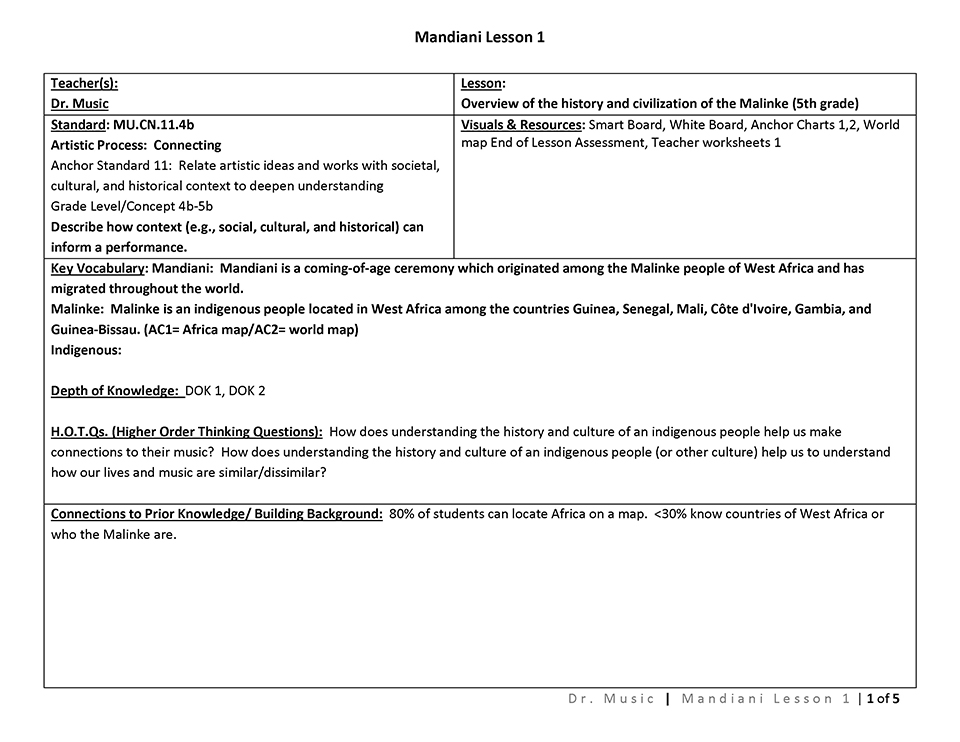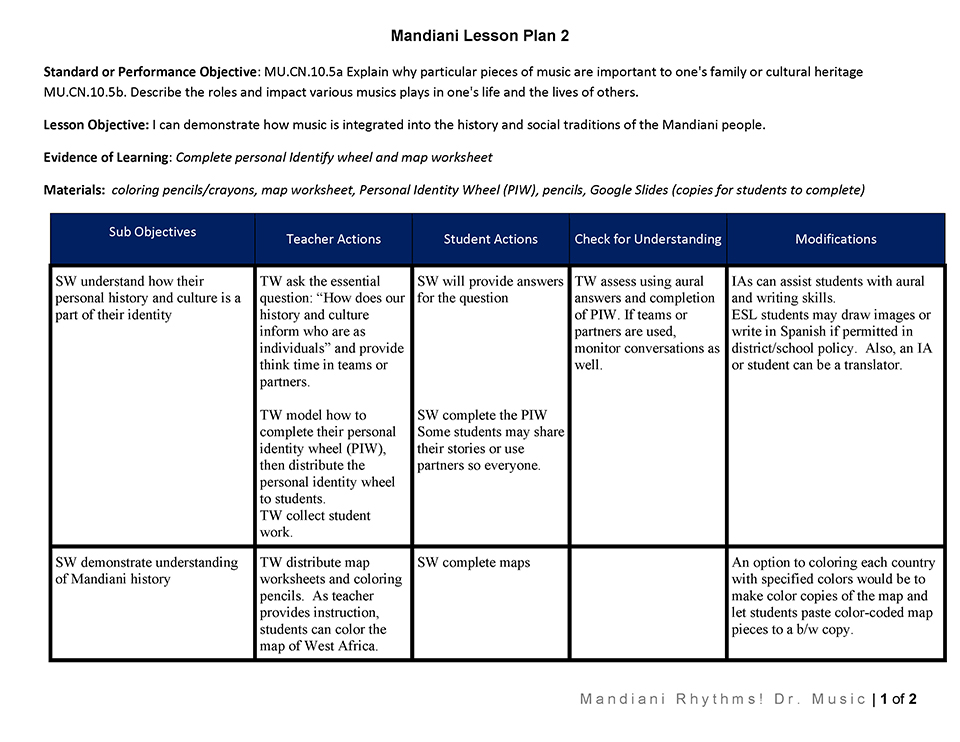Mandiani Rhythms! Lesson Plans & Tips for Teachers
by Dr. Dianne Anderson-Nickel (2022)
Welcome, teachers to the Cultural Arts Coalition's Mandiani Rhythms! Project for African percussion and dance in elementary grades. Below are a few tips to guide you through the lesson plans and resources. If you haven't done so yet, stop by the "Mandiani Rhythms! Cultural Resources" page for videos and articles, which support these lessons.
Tips
For the lesson plan template, two forms were used based on the REILL LOI teacher evaluation process. The first template is detailed and provides additional cues that a newer teacher might find helpful. The second lesson plan is more streamlined and can be used as a lesson plan or an outline for lesson planning. These two lesson plans were developed with 5-6th AZ General Music Standards. AZ Standards use similar language as the National Standards.
The lessons can be divided into several lessons as needed. The amount of class time, students' drumming experience, and knowledge of Mandiani are all factors which determine student progress and achievement. We suggest these lessons precede the actual learning of Mandiani music and dance, so that students are familiar with the culture and meaning of the drumming, singing, and dance. Again, music education instructional time varies greatly among schools and districts. Based on 60 minutes of weekly instruction, I suggest teaching these lessons 2-3 weeks prior to actual drumming and dance instruction. To modify lesson plans, please download a copy of the Google file. You will not be able to modify the original file in Google Docs.
Most objectives and essential questions are written as DOK level 2. Depending on classroom factors, including class size, cognitive skills, grade level, and instructional time, questions can be modified or scaffolded to DOK 3 or 4. Be sure to make use of all of the "Mandiani Rhythms! Cultural Resources."
Another good resource is Will Schmidt's World Drumming book. This book also contains valuable information I used in my world drumming class. I suggest a map that has the outline of West African countries that students can color code with crayon or coloring pencils OR make a black and white copy as a base and then a colored copy where they can glue/paste the color-coded country onto the black and white.
Feedback or Concerns
Please feel free to contact us with questions. Once you've implemented the resources in your classroom, your professional appraisal will also assist us in refining these lessons and developing further study units.
Thank you for implementing this project with your students. Understanding and celebrating other cultures helps us understand and celebrate our own culture. We discover more similarities among all peoples. I hope it is a great experience for you and your learning community.
The Lesson Plans
Download the files from Google Docs.


Resources and Links
- Arizona General Music State Standards, Arizona Department of Education, Phoenix, AZ.
- Cultural Arts Coalition. "Mandiani Rhythms! Cultural Resources." (2023)
- National Music Standards, National Association for Music Education, Reston, VA.
- Schmidt, Will. World Music Drumming: A Cross Cultural Curriculum, 1995. Hal Leonard Corporation: Milwaukee, WI. [Also available: Teacher's Edition, Video, Reproducible Cross-Cultural Student Enrichment Book, Classroom Kit (includes all of the above components), additional levels.]
- Sunkett, Mark. Mandiani Drum and Dance, 1995. White Cliffs Media: Gilsum, NH.
- "West Africa." Google Maps. Accessed 5 Aug. 2023.
